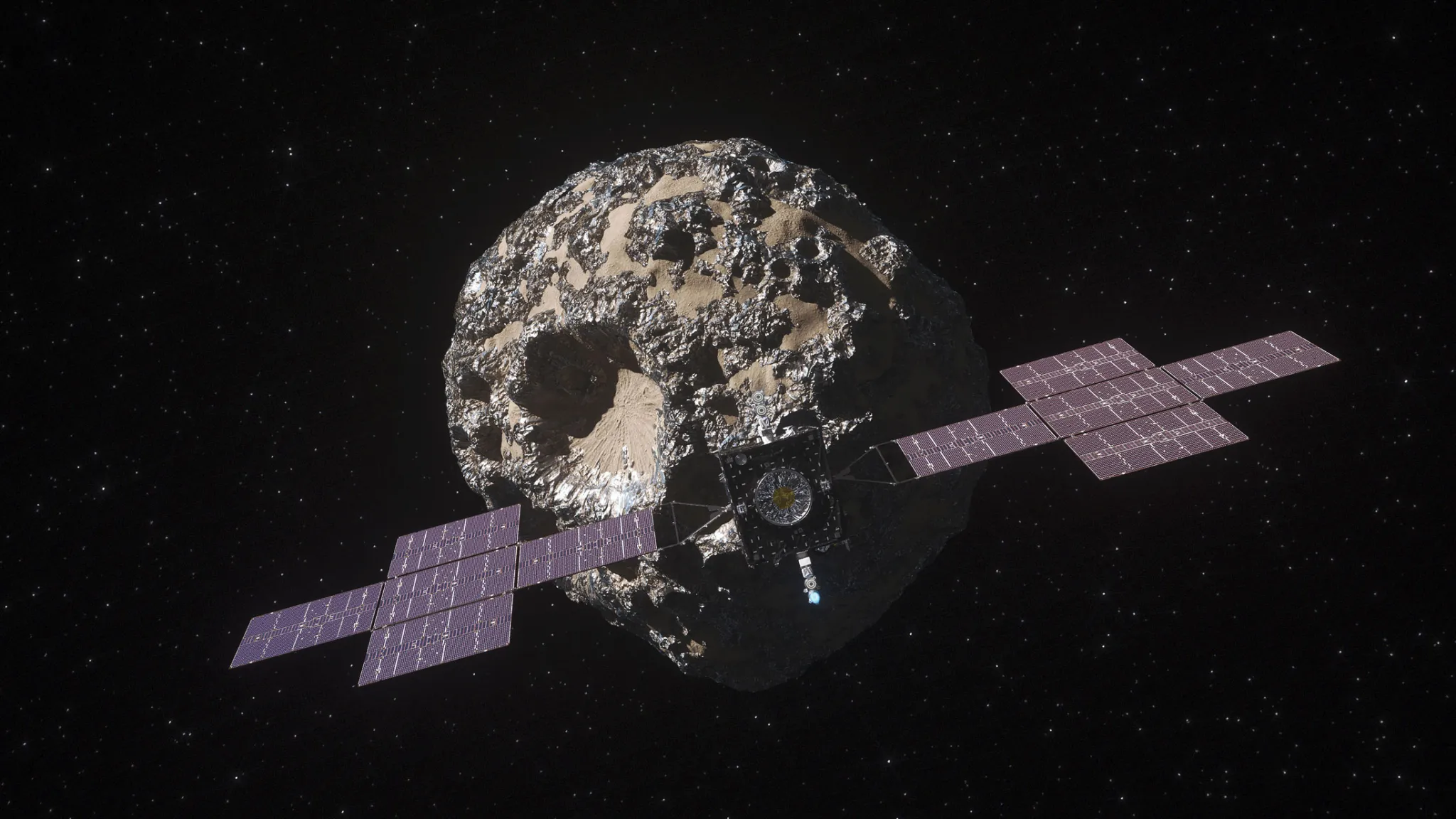
NASA’s Mission to Explore the Enigmatic Metal-Rich Asteroid ‘Psyche’
In a remarkable venture into the cosmos, NASA’s spacecraft embarked on a journey to reach ‘Psyche,’ an intriguing asteroid located a staggering 2.2 billion miles (3.6 billion kilometers) away from Earth. This celestial body, composed primarily of metal, is a tantalizing enigma, believed to be the remnants of a small planet or potentially an entirely novel celestial entity hitherto unknown to science.
The mission, carried by a reusable SpaceX Falcon Heavy rocket, commenced its voyage from the Kennedy Space Center on a Friday, with liftoff occurring at 10:19 am Eastern Time (1419 GMT). NASA’s Chief, Bill Nelson, expressed enthusiasm about the mission, highlighting the potential for gaining insights into the evolution of celestial bodies within our solar system. He explained, “We’re going to learn all kinds of new things, how these things fly through the solar system, and they hit each other and they cause the evolution of what we have today, our solar system.”
Lindy Elkins-Tanton, the lead scientist for the mission, added that previous space explorations have focused on planets made of rock, ice, or gas, but ‘Psyche’ presents an unprecedented opportunity as it features a metal surface.
The journey of this van-sized probe, adorned with a blue glow emanating from its next-generation electric propulsion system and equipped with two large solar arrays, will culminate in the Asteroid Belt, nestled between Mars and Jupiter, in July 2029.
Over the span of two years, the spacecraft will deploy its advanced instruments to conduct an exhaustive examination of ‘Psyche.’ The mission’s objectives include probing for remnants of an ancient magnetic field, scrutinizing the asteroid’s chemical and mineral composition, and mapping its topography.
‘Psyche’ is believed to be the exposed iron-nickel core of a “planetesimal,” a fundamental building block of rocky planets, resulting from a past celestial collision. However, there remains an intriguing possibility that it could be an entirely novel primordial solar system entity.
One remarkable aspect of the mission is the utilization of Deep Space Optical Communications, a cutting-edge communications system that harnesses lasers, providing data return capacities substantially superior to contemporary radio systems used in space. This technology is a significant advancement, akin to upgrading conventional telephone lines on Earth to fiber optics.
Moreover, ‘Psyche’ employs a distinctive propulsion system known as “Hall-effect thrusters.” These thrusters utilize energy from solar panels to generate electric and magnetic fields, expelling charged xenon gas atoms. While the thrust exerted is akin to the weight of an AA battery on Earth, it accelerates continuously in the vacuum of space, ultimately reaching speeds of tens of thousands of miles per hour. This innovation eliminates the necessity of carrying heavy chemical fuel into space, marking a milestone as it ventures beyond lunar orbit.
The ‘Psyche’ mission represents a momentous endeavor, promising to unveil the secrets of this mysterious metal-rich asteroid and redefine our understanding of celestial bodies in our solar system.